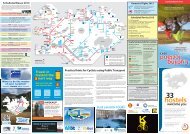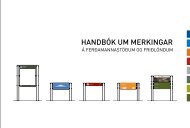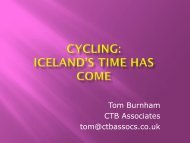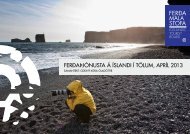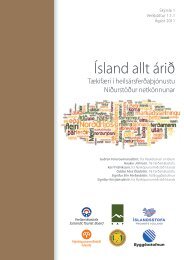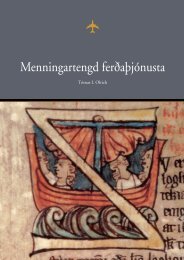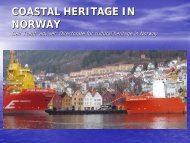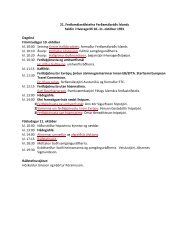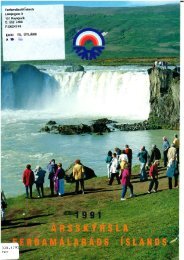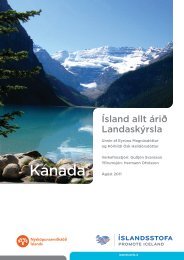Untitled
Untitled
Untitled
You also want an ePaper? Increase the reach of your titles
YUMPU automatically turns print PDFs into web optimized ePapers that Google loves.
Pratt and Watts 2000, p. 840). What we thus seek to answer is how come<br />
that not even geographers, coming from a discipline which means<br />
precisely “earth writing” (Gren 1994) and “which has a protracted record<br />
of published tourism scholarship dating back to the 1920s” (Coles, Hall<br />
and Duval 2006, p. 296), seem to be unable to resist the temptation of the<br />
social? Our research agenda may be read as a tentative plea for an explicit<br />
theoretical re-cognition of the Earth in tourism studies.<br />
Setting this agenda is however also relevant in the context of the<br />
second objective of the report, that it should be able to be read and used as<br />
an educational text in tourism studies at undergraduate level. We<br />
recognise that at any given time, a student in tourism studies will learn, as<br />
though instinctively, what is admissible. To become educated in the field is<br />
to acquire this knowledge of what is admissible, often implicitly. This selfregulation,<br />
or set of feedbacks in the network of educational relations,<br />
makes up the main constraint for anyone wishing to become a scholar of<br />
tourism (Serres 1995, p. 104). With an earthly research agenda we want to<br />
add to the fundament which defines the validity of the learned procedure<br />
of the tourism student.<br />
The chapter begins with a return to our original point of departure;<br />
images, which are elaborated in the context of tourist and tourism<br />
imaginationings. After that we revisit tourism studies in order to pave the<br />
way to a section where we demonstrate how tourism theory can be moved<br />
beyond social theory. In particular we are interested in how the Earth has<br />
been erased through mapping tourism and tourists onto the reference plane<br />
of the social and the possibilities to recapture the Earth and non-humans in<br />
tourism theory. We end thus with a brief a note on earthly methodology.<br />
Still images - on the move<br />
Our investigations began with images in tourism and have on several<br />
occasions skirted what we now would like to refer to as the “visual<br />
paradox of tourism studies”. On the one hand this paradox means that<br />
tourism is indeed full of the visual, including visual technologies, and there<br />
is also little doubt that the visual part of tourist experiences is highly<br />
significant (Urry 1990, Crouch and Lübbren 2003). On the other hand, and<br />
in spite of the just mentioned importance of the visual in tourism:<br />
image based-research methods are simply not on the agenda for many<br />
tourist researchers” (Feighey 2003, p. 78).<br />
86



